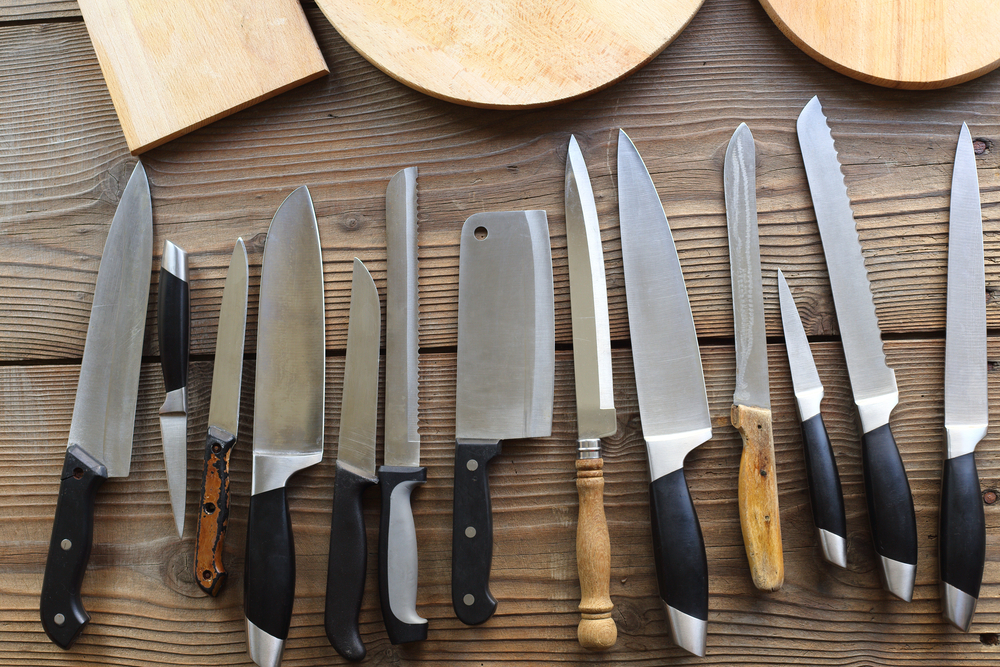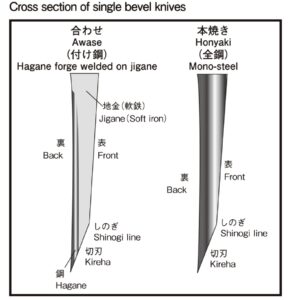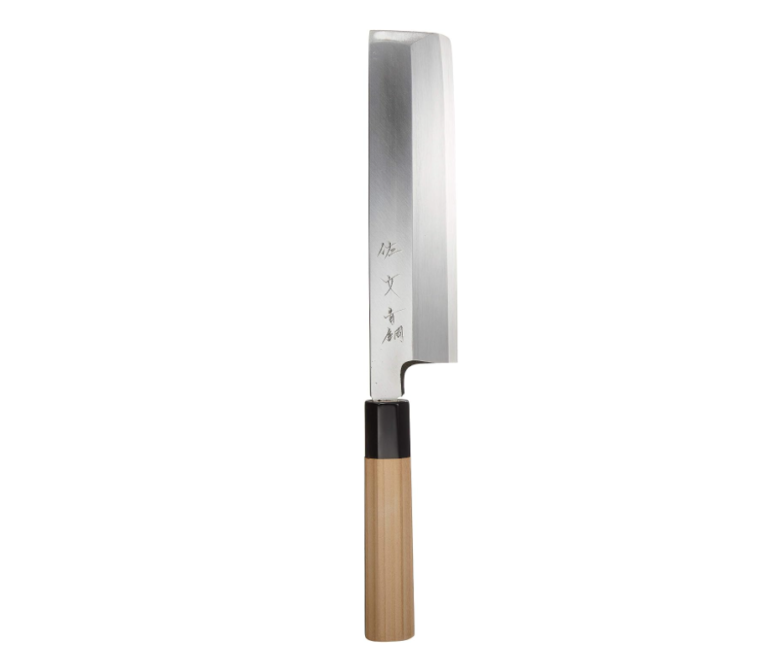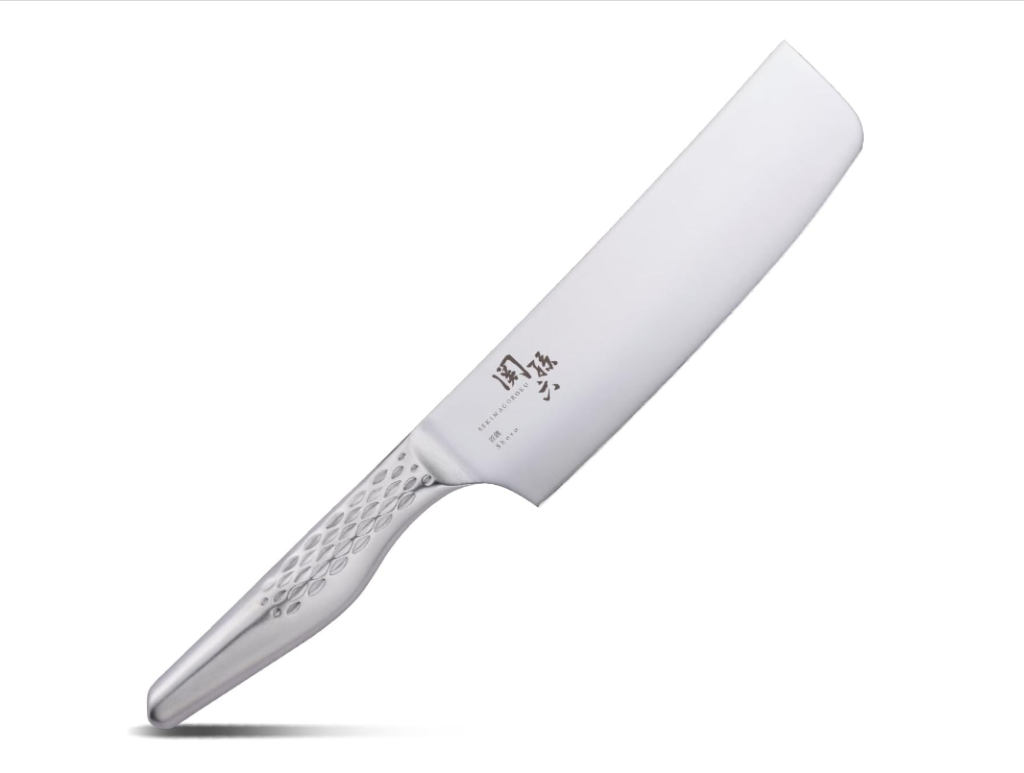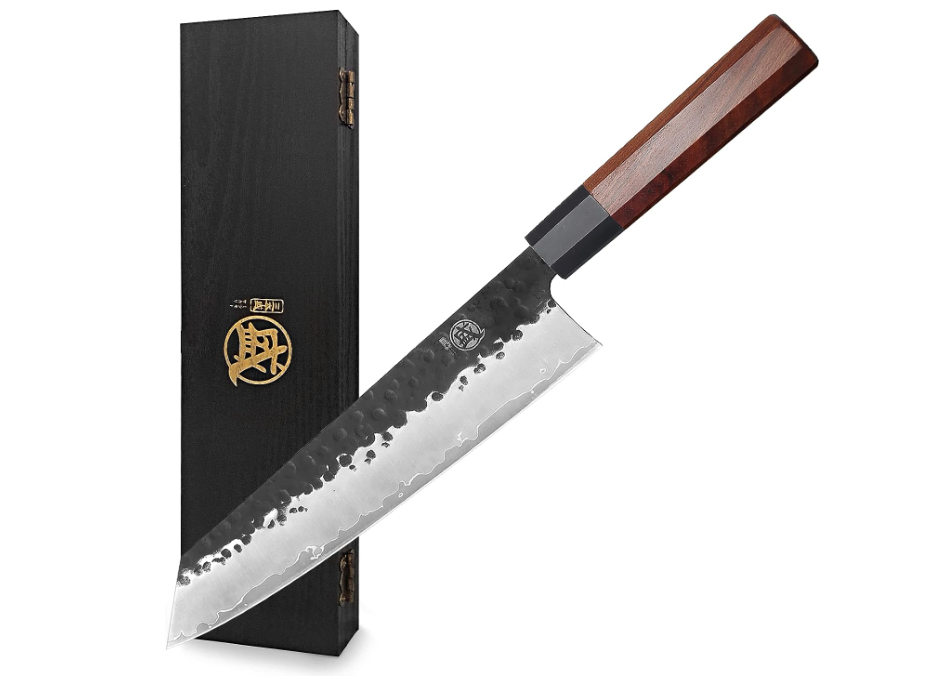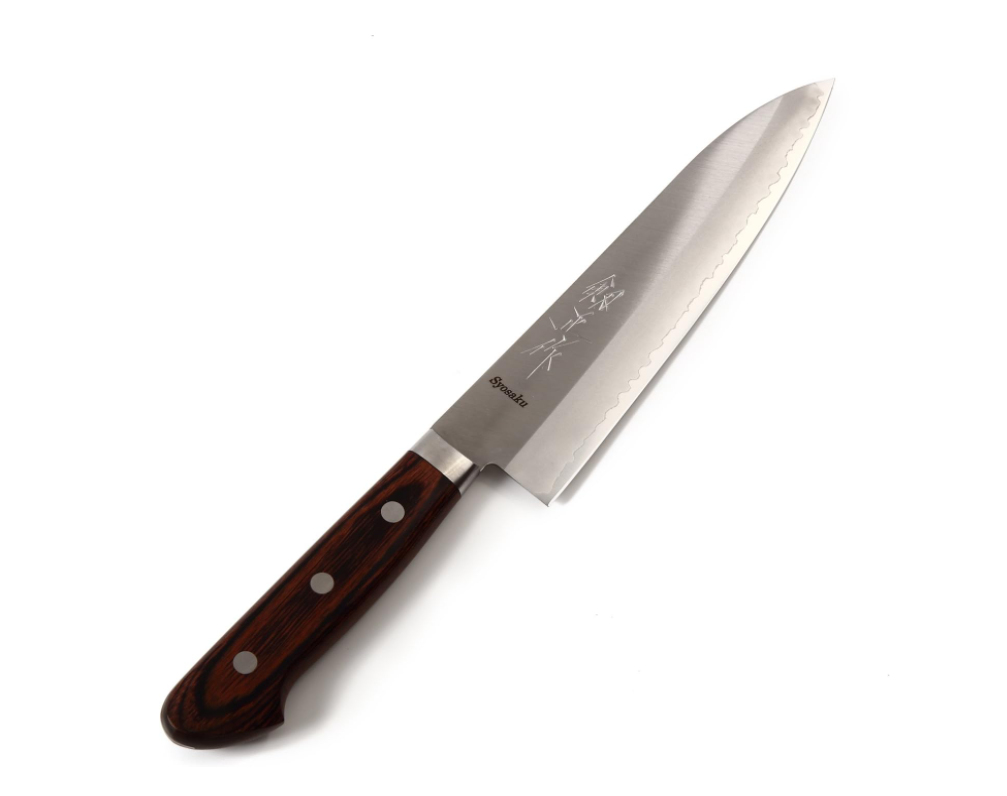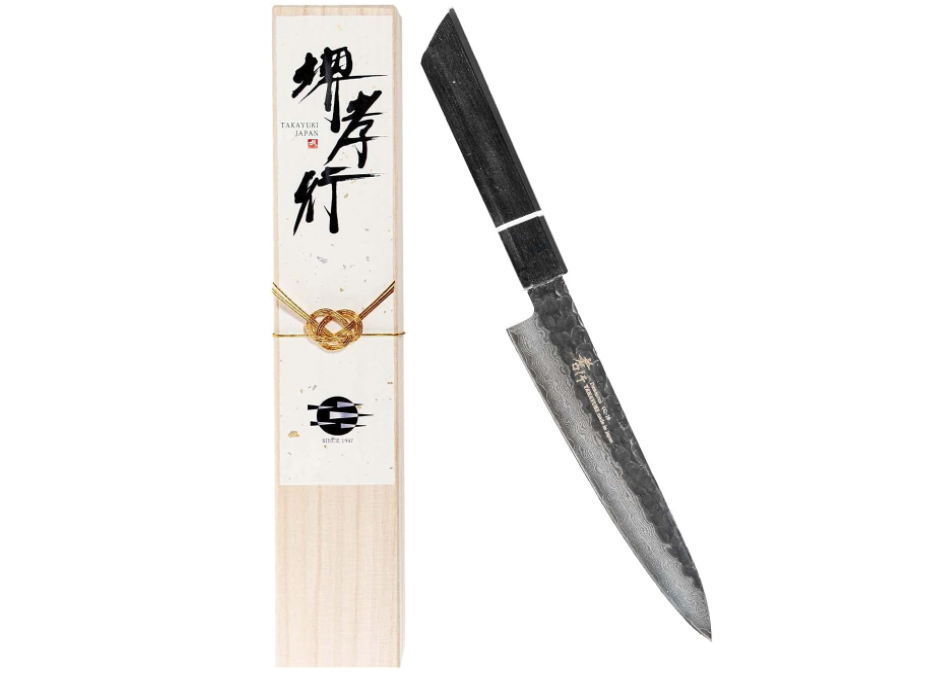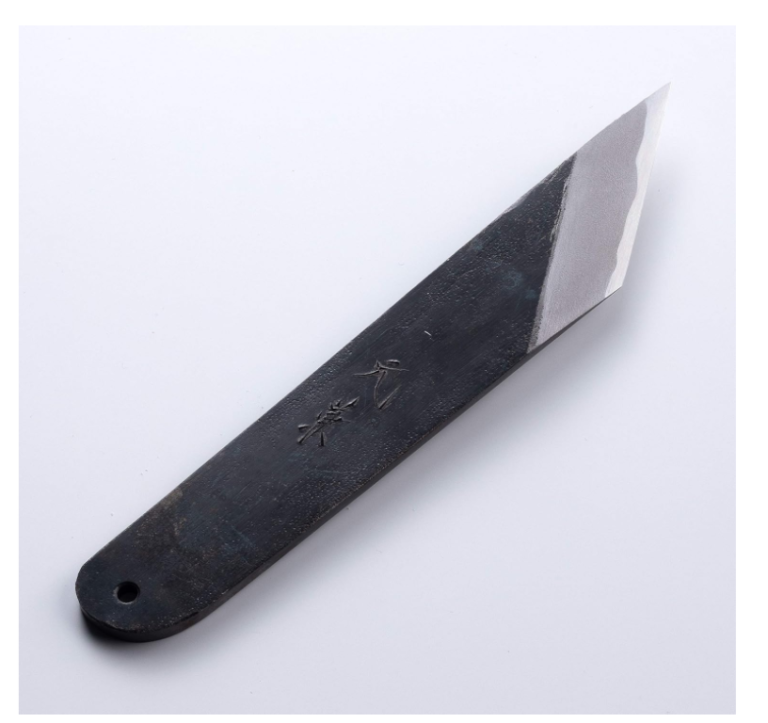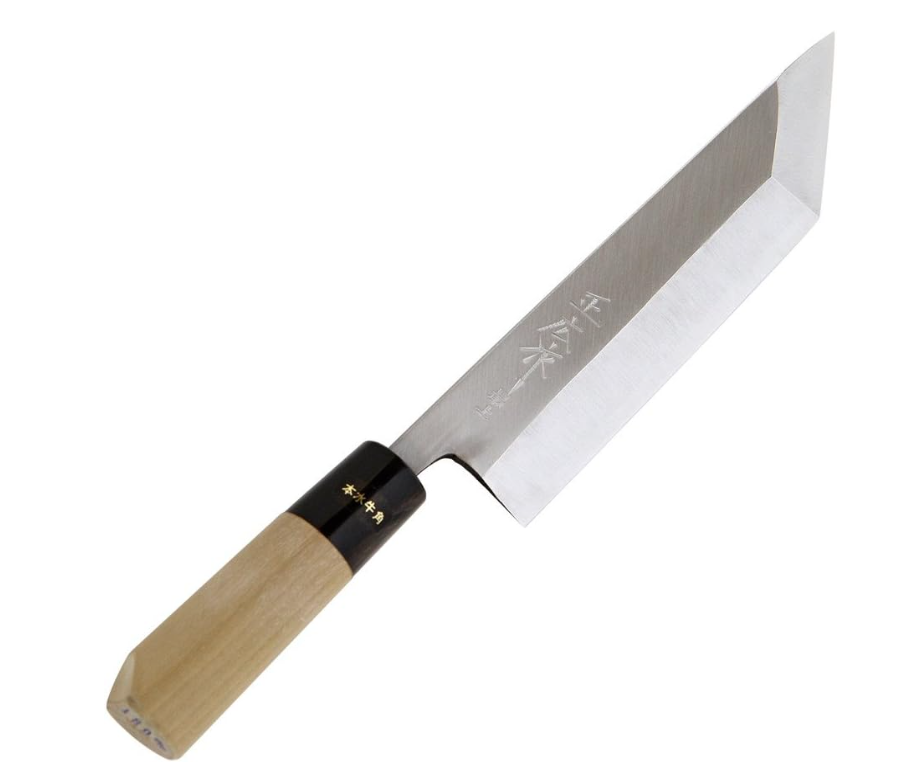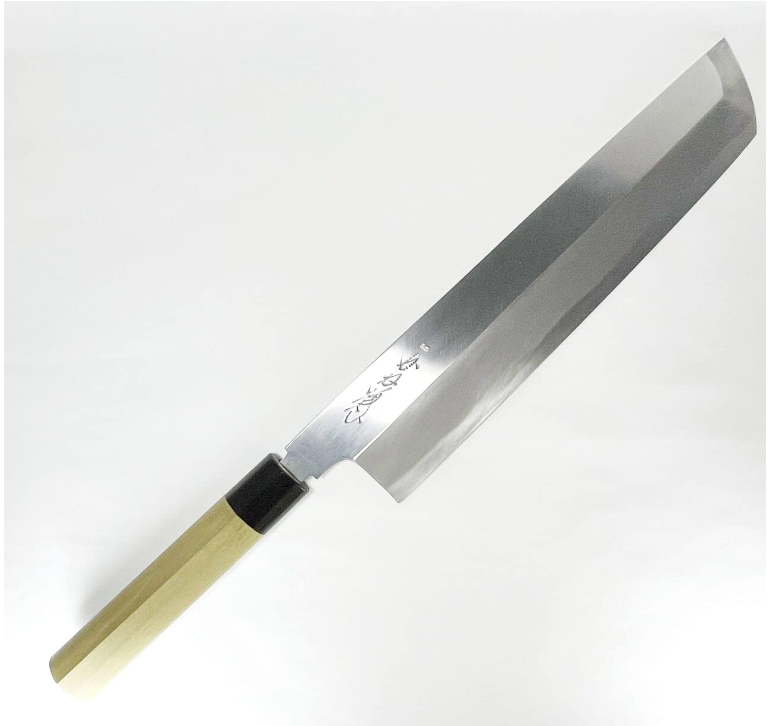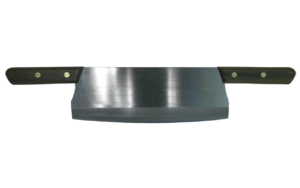In Japan, there are various types of kitchen knives are used to prepare Japanese food.
Most of them are already existed in the latter part of the Tokugawa era.(Edo Period).
Each style of knives has its own style of specific purpose. Those are called WaBocho(和包丁)
How many of them do you have already?
**Affiliate Disclosure**
In compliance with the Federal Trade Commission (FTC) guidelines, please be aware that some of the links on this blog are affiliate links. This means that, at no additional cost to you, I may earn a small commission if you make a purchase through these links.
I want to assure you that the products and services I recommend on this blog are ones that I have either personally used or thoroughly researched. Your trust is of utmost importance to me, and I only promote products or services that I genuinely believe can provide value to you, my readers.
I tried to find products that could be purchased in the UK as much as possible. However, as this article is introducing some special-purpose knives, it’s difficult to find them in the UK. So, most of the special knives links are from Amazon Japan’s website. I apologize for any inconvenience this may cause, but I hope that at least you could see the types of knives, not only the explanations.
Please note that the commissions I earn through affiliate links help support the maintenance and growth of this blog. It allows me to continue providing you with valuable content, reviews, and recommendations.
Your support through these affiliate links is greatly appreciated and helps keep this blog running. If you have any questions about affiliate links or any of the products or services I recommend, please feel free to reach out to me.
—
Table of Contents
What is Japanese knife?
Western knives are typically steel ot stainless steel and double-ground, means you need to sharpen both side of the blade. By contrast, most Japanese knives have a single-ground blade in one of 2 types: Hon-yaki(本焼き)and Kasumi(霞)
- Most Japanese knives have a single-ground blade
- There are 2 types : Hon-Yaki and Kasumi
- Hon-Yaki : 100% high-carbon steel
- Kasumi( or Awase) : High-carbon steel forged onto soft iron
Difference between western knife and japanese knife?
I think Japanese knives are becoming more and more popular worldwide.
I see many non-Japanese-cuisine chefs are using Japanese knives but often see that they use it as if western knife.
Japanese Ho-Cho(包丁)are efficiently designed to slice foods thinly without crushing the delicate tissue. The back side of the blade is curved to keep food from sticking, further enhancing cutting capability.
Whereas double-ground Western knives are made mainly to cleave food, dividing it left ans right. It’s more like “to chop” ingredients.
Types of Japanese knives
There are roughly three different types of knives used in Japan; Japanese, Western, Chinese knives.
Although there are many different types of knives in the world, I will introduce here the ones that are commonly available in Japanese cutlery stores.
Yanagiba/柳刃
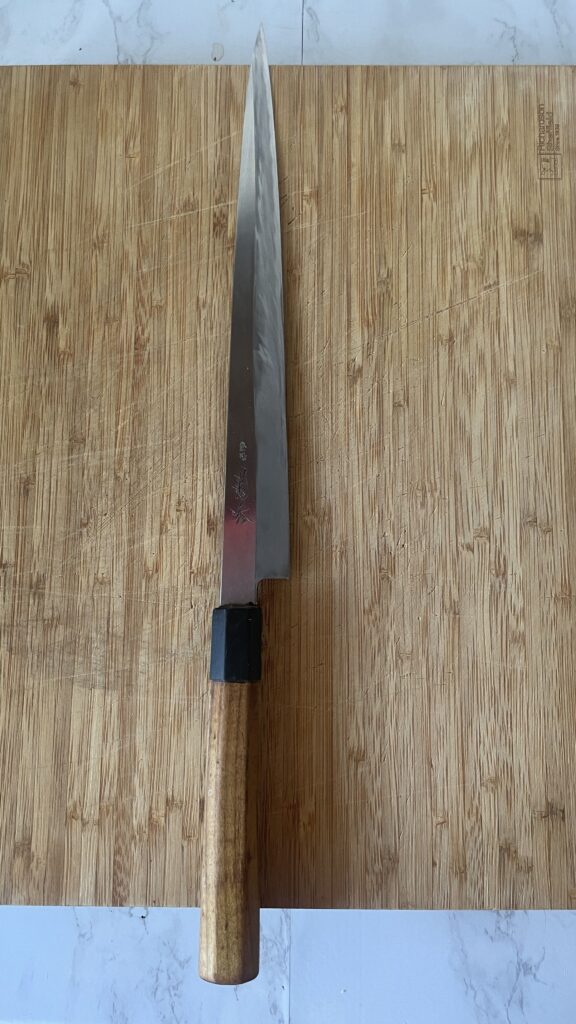
Yanagiba was originally popular in Kansai region( around Osaka) in Japan to prepare sashimi, whereas TAKOBIKI(蛸引き) was used in the Kanto region(around Tokyo) for sashimi.
Today, Yanagiba is widely used throughout all of Japan by professionals. The thin, long, narrow blade is specifically used for cutting fish.( yes, Sushi and Sashmi)
Most professionals carry a variety of Yanagiba with blade length between 240mm to 360mm, and choose the appropriate length depending in the size of the fish. If you are non-professional, choose between 210mm and 240mm are easy to handle.
➡Example of Japanese Sashimi Yanagiba Knife
Yanagiba(Hon-yaki)/柳刃(本焼き)
There are two types of Japanese knives, “Kasumi (霞)”, which is forge-welded with bare metal (soft iron) and steel material (blue paper, blank paper, etc.) that becomes a cutting edge, and “Honyaki”, which is made only of steel material.
Honyaki knife can keep its sharpness longer and the cut surface of the food will be beautifully finished.
However, it is hard and fragile to impact, so sharpening technique and utmost care are required. In addition, manufacturing requires skill and labor, and the number of craftsmen who can make it is limited to a few even in Sakai, Osaka Prefecture, the home of Japanese knives.
🔦I listed an example of Honyaki knife above. However, in my opinion, you do not need such expensive knife, unless you are working in high quality luxary Japanese kitchen as this is advanced knife.
Kiritsuke Style Yanagiba/切付け型柳刃

It was first used in Kanto region of Japan.
The tip of knife is slanted like Kiritsuke knives. (a versatile knife that can be used for a variety of purposes if it’s like shape of Gyuto.) It’s tend to be heavier than normal Yanagi.
This one on the left is mine from Tsukiji-Aritsugu. Material is Gin-san(銀三)270mm mirror finished. It’s pretty heavy but I like this sharpe tip looks. I think it’s so cool.
It’s my favourite shop →Tsukiji Aritsugu
Takohiki/蛸引き
Takohiki was used as a sashimi knife in the Kanto region of Japan. It is characterized by its squared tip and the straight edge.
Due to its long and straight edge, Takohiki can also be useful to cut things that are soft and have a large mass such as Kanten(agar).
Attached beautiful Youtube video blow, using Takohiki. ☟
Fuguhiki/ふぐ引き
The “fugu-hiki bocho,” (Puffer fish)essential for thinly slicing fugu sashimi, is uniquely crafted with a blade thickness of less than 3 millimeters.
It significantly differs from a typical sashimi knife. It features a long blade length and a pronounced curve at the tip.
Moreover, the term “fugu-hiki” originates from the slicing technique of pulling the knife from the inner side of the fugu’s flesh towards the front, resulting in thin slices. It’s also referred to as the “tessa bocho.”
When slicing fugu, it’s crucial to use a long blade to swiftly and gently pull-cut without damaging the delicate flesh cells.
Deba Knife/出刃包丁
Deba is indispensable for cleaning fish. It is used to cut through hard bones and also fillet fish. Thus, it is constructed with a thick spine while tip is thin with an extremely sharp edge. Deba knives are usually 105-210mm long and up to 9mm thick. Although Deba knives certainly look like they could cut through the fish/meat bones, we shouldn’t use them for that as the blade is still sensitive for chipping. For cutting bones a Cleaver is your best tool.
We professionals have a range of Deba and choose a suitable size depending on the size of the fish.
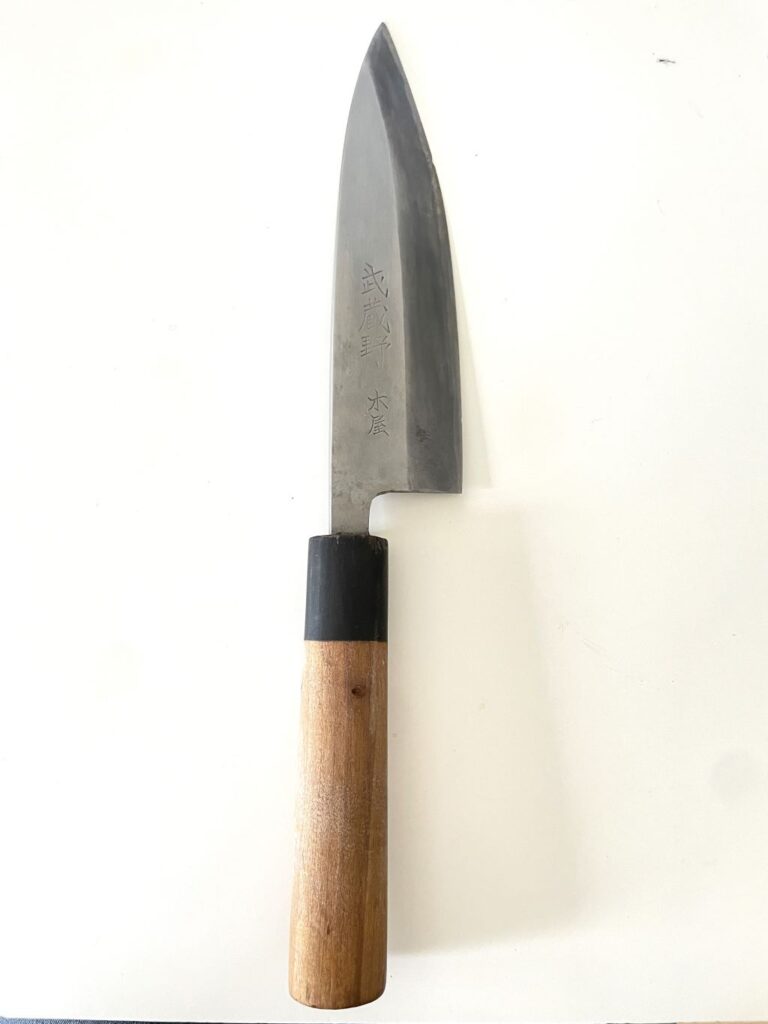
Hon-Deba Knife/本出刃
It’s a substantial and larger deba knife compared to the typical deba. It can handle fish weighing over 10 kilograms such as salmon, yellowtail, bonito, and bigeye tuna.
Size 210mm~~
Mioroshi-deba knife/身卸し出刃
It’s used for filleting fish, (“miroshi” in Japanese means “filleting”, these kinds of deba knives are thinner and longer) and often used at fish market.
It’s like between Sashimi knife and Deba knife. You can fillet and slice fish with this knife.
size 180mm~270mm
Kodeba knife/小出刃
It’s a smaller Deba, suitable for small fish. About 105mm~120mm size.
Kanisaki knife/蟹裂き出刃
Special Deba, used for cutting crabs and in particularly, lobsters.
Yo-deba/洋出刃
A Deba with a European handle. Unlike the deba of Japanese knives, it has a double-edged blade, but it can also handle fish.
Due to the thick blade, it is not suitable for cooking vegetables.
Usuba knife/薄刃包丁
Usuba knives are a type of Japanese knives that specialize in cooking vegetables, and the blades are extremely thin and sharply finished for delicate cooking such as chopping, peeling, and shaving without breaking the fibers of vegetables.
The blade path from the jaw to the cutting edge is almost straight so that the entire blade hits the cutting board evenly when hitting, and it is devised so that the entire blade can be widely used for delicate peeling such as wig peeling.
Usuba knives include almost all the basic movements required to handle Japanese knives, with that being said, it requires a certain amount of skill to handle them.
However, it is a very useful knife for delicate work. .. It is also characterized by different types depending on the region. In the Kanto region, Azumagata Usuba 東方薄刃 (called the square type with a square tip) and in the Kansai region, Kamagata Usyba 鎌型薄刃the sickle shape with a rounded tip has developed as the mainstream.
Nakiri-knife/菜切り包丁
It is a vegetable knife that has been popular at home for a long time.
The blade is usually double-edged and thin, flat and unrivaled. The blade is straight on the material, such as chopped vegetables, which are the main use of home cooking, hard and fragile ingredients (long potatoes, lotus, etc.) that are broken without breaking. It is easy to enter. On the other hand, it is said that it’s not suitable for fine work such as peeling compared to Usuba which is single -edged.
Mukimono knife/剥きもの包丁
The Kawamuki/Mukimono is a small knife used for pearling or rounding off corners of food. Blade length between 90mm and 150mm are popular. There are single bevel and double bevel Kawamuki. Single bevel is often used in home kitchens.
These knives are commonly mistaken for their longer, thicker cousins the Kiritsuke and when slightly longer may also be called Kengata Usuba. The blade of a Mukimono is much straighter than a Kiritsuke, which will curve slightly closer to the tip to facilitate a more natural slicing motion while the straight blade of a Mukimono is meant to cut vegetables with one smooth motion to the cutting board or to better assist with Katsuramuki.
Kiritsuke Knife/切付け包丁
Kiritsuke has mainly been used in Kanto region. Many use it in lieu of both Yanagiba and Usuba. It’s also suitable to precisely cut a type of food used in some Japanese sweets called Nagashimono/Yosemono (it’s a dish in which agar, gelatin, kudzu powder, etc. are dissolved in water, heated, and the ingredients are mixed and poured into a mold to cool and harden.)
Single and double bevel Kiritsuke are available.
Wa-Gyuto/和牛刀
Gyuto is originally a western-styleknife, and used as a general purpose knife to cut a variety of foods including meat and vegetables. Like a standard Gyuto, Wa-Gyuto is also a doule bevel knife.
Unlike Gyuto, Wa-Gyuto has shinogi, a line between kireha(the blade road) and hira(the flat suface towards the spine), therefore it can be sharpened in a similar manner as other Japanese style knives.
Many Wa-Gyuto are normally made of stainless steel and are mono-steel knives, however there are also ones made with various hagane(鋼)for professional use. Also Gyuto can have a variety of different finish styles.
Wa-Petty/和ぺティ
Like Wa-Gyuto, Wa-Petty is also a double bevel knife utilized by Japanese chefs. Some professionals use knives that have been reduced in size due to years of sharpening as Wa-Petty. The use of Wa-Petty is the same as petty knives.
The size(Blade length) usually betwwen 90mm and 150mm
Specialized Japanese Knives/特殊包丁
There are knives used for a specific type of fish for a specific task are categorized a specialized knives.
Maguro Knife/マグロ切り包丁
Used to fillet tuna. Often seen in fish markets such as Tsukiji market.
The sizes are from 450mm to about 1600mm, very wide rage.
Unagisaki: Eel Knife/鰻裂き包丁
A kitchen knife that handles eels. The differences in shape are based upon the regions. This is because how they prepare eel. The kanto region, eel is cut or filleted from the back side, whereas the Kansai region eel is cut from the belly side. Futhermore, There is the Ise-Nagoya style often called Ryobiraki-you(can be used from both sides of the fish). However, some professional chefs use a Deba knife for this. It’s possible if you are enough experienced filleting skill.
I attached YouTube Video below. This is the Kanto style filleting.
Hamokiri Knife/鱧切り包丁
This knife is used to perform Honekiri(骨切り) for Hamo (Pike Conger).
What’s Honekiri?
It’s used to slice or make incisions every 1.0-2.0mm on an entire fillet of a pile conger to cut its tiny bones. Thus softening up the flesh. I had experienced honekiri in Japan few times. It is such a fun and satisfying to do and hear the distinctive audible sound.
Sushi-kiri Knife/寿司切り包丁
Besides the nigiri style of sushi, there are other style of sushi such as makizushi, a sushi roll, or oshizushi, which is made by pressing blocks of rice and sushi toppings in a special mould (called an ‘oshibako’) to create perfect rectangles that can then be sliced up and served.
To cut these types of sushi in a desired thickness, Sushikiri is used. This knife is double bevel with a wide blade in order not to destroy the ingredients.
Mochi-kiri Knife/餅切り包丁
Mochi, Japanese rice cake is supposed to be cut after pounded and hardened. (Don’t imagine like a Mochi Ice cream we often find in Whole Foods…)
Since a vertical motion is applied to cut mochi, the knife has a curved edge.
Single handed and double handed Mochikiri are available.
Men-kiri, Soba-kiri Knife/麺切, 蕎麦切り包丁
It is used to cut noodles like Soba and Udon.
To make soba or udon the dough is flattened and folded, and then cut with the menkiri bocho to produce long rectangular noodles. For this purpose the menkiri bocho has a straight and long cutting edge to cut the noodles straight to the board.
A unique shaped single bevel knife. When you cut, move the blade vertically on the dough using the weight of the knife.
Shime-Bocho/〆包丁
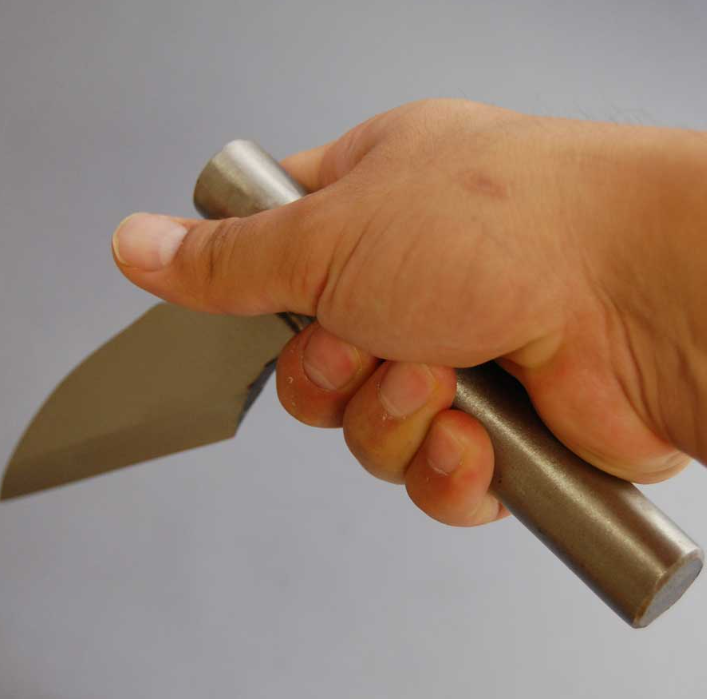
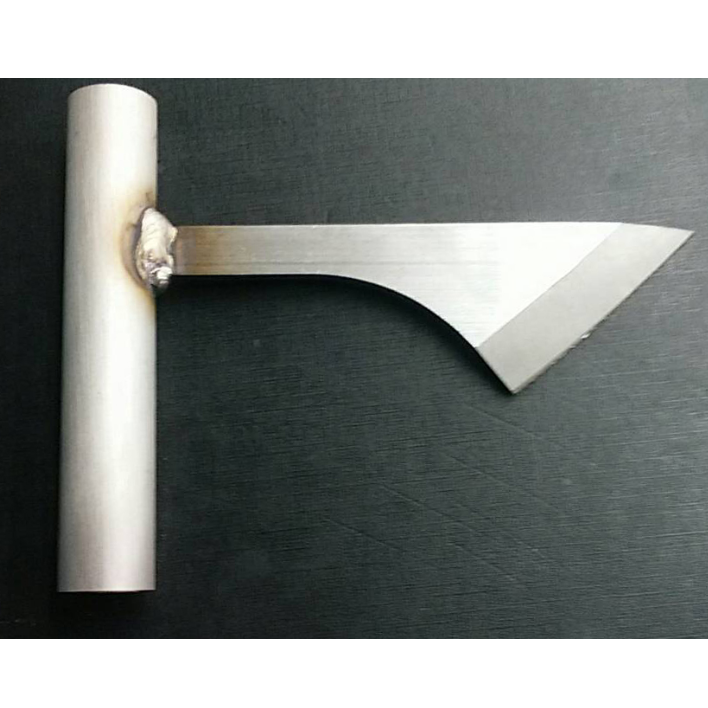
Shime-bocho is used by professional fishermen and by people working at fish farms. The sole purpose of this is to efficiently bleed the fish to keep it fresh. Therefore, the shape of the knife made for east griping.
Wa-Santoku Knife/和三徳包丁
Santoku in Japanese transliterates as “three virtues” so they are otherwise known as “three purpose” knives. The three purposes which a santoku is meant to fulfill is cutting meat, vegetables and fish.
The difference between Wa-Santoku (Japanese style santoku) and Yo-Santoku(Western style santoku) is the handle. The material used for core steel can vary from stainless steel for easier handling to high carbon steel used in traditional Japanese knives.
Nowadays, Wa-Santoku is often categorized as Bunka knives which is similar shape but the spine tip is cut off at an angle and has more of a pointer tip.
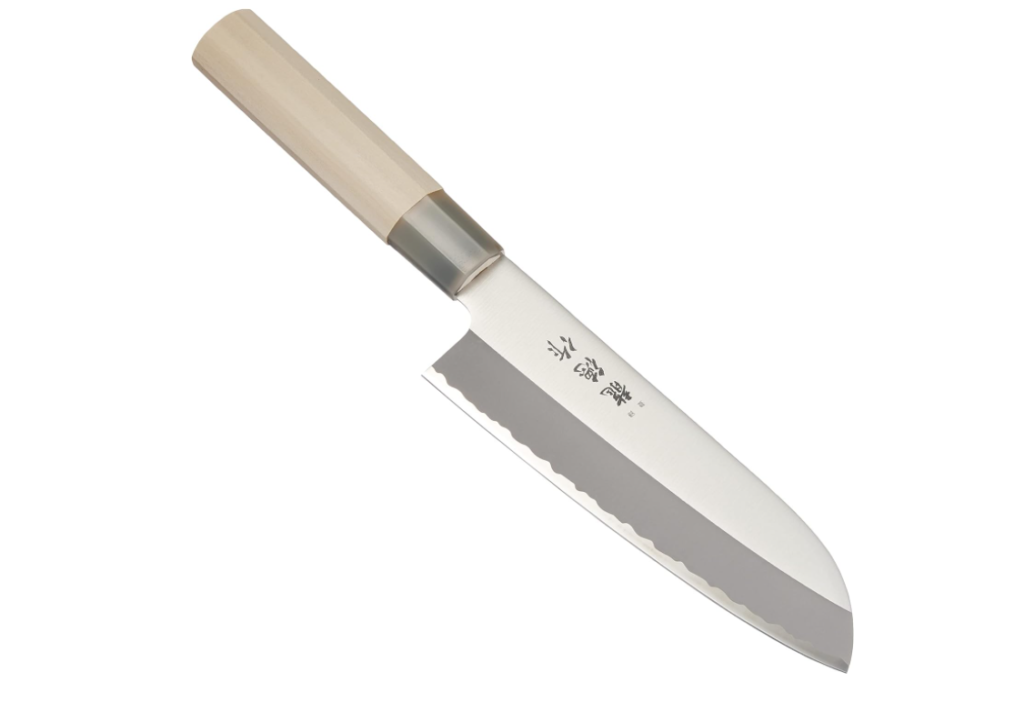
Ending...
whatever kind of knives you have in your collection, I hope you love them, maintenance properly and handling correctly as a professional chef.
This article refer to :
